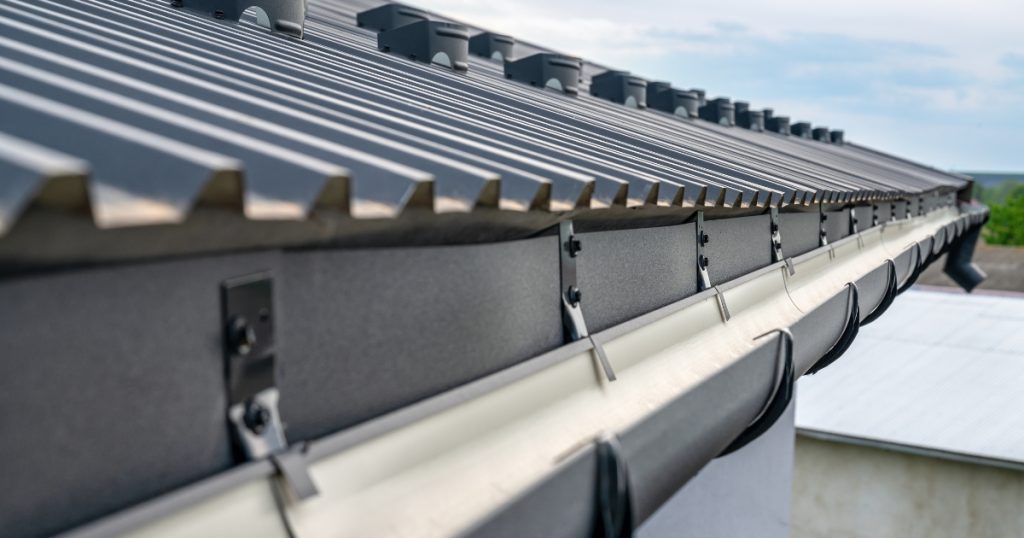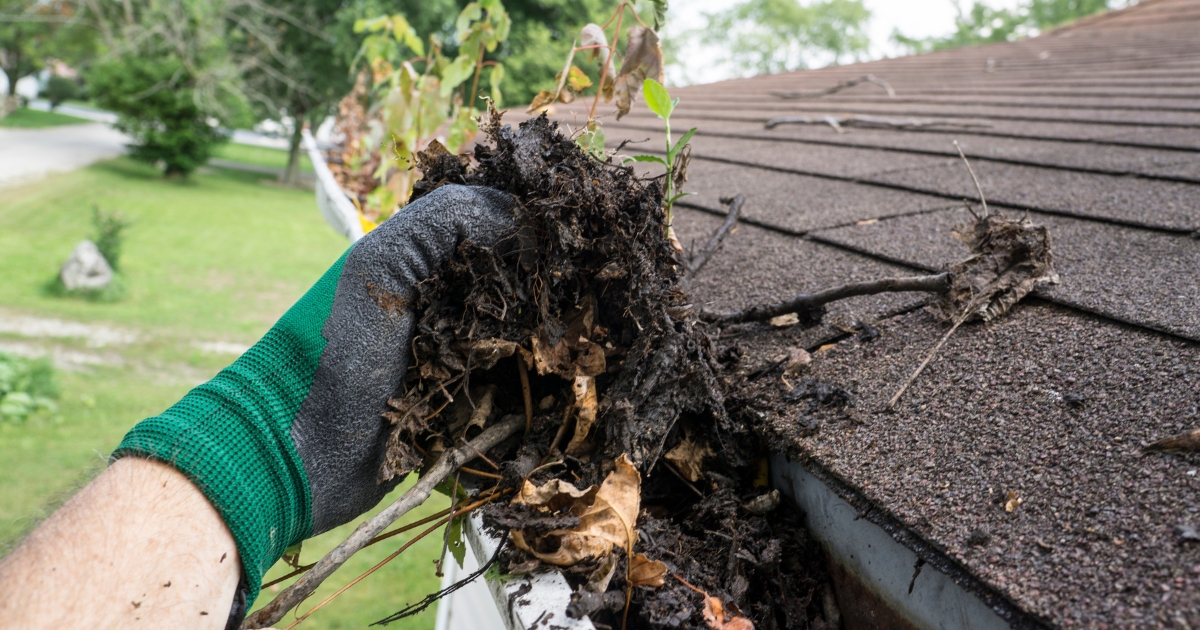
Gutter cleaning is a crucial aspect of home maintenance that often goes overlooked. The primary function of gutters is to channel rainwater away from the roof and foundation of a house, preventing water damage and structural issues. When gutters are clogged with leaves, twigs, and other debris, they can no longer perform this essential function effectively.
This can lead to water pooling around the foundation, which may cause cracks, mold growth, and even flooding in basements. Therefore, regular gutter cleaning is not just a matter of aesthetics; it is vital for preserving the integrity of a home. Moreover, clean gutters contribute to the overall health of a property.
They help prevent the growth of pests such as mosquitoes and rodents, which are attracted to stagnant water. Clogged gutters can also lead to ice dams in colder climates, where water freezes and expands, causing damage to the roof and gutters themselves. By ensuring that gutters are clear and functioning properly, homeowners can avoid these potential hazards and maintain a safe living environment. Goliath Softwash Map Location is where you can find the best softwash services in town.
Key Takeaways
- Regular gutter cleaning is important to prevent water damage, mold growth, and structural issues in your home.
- Signs that gutters need cleaning include overflowing water, sagging gutters, and visible debris.
- Gutter cleaning should be done at least twice a year, but more frequent cleaning may be necessary depending on factors such as nearby trees and weather conditions.
- Regular gutter cleaning benefits include preventing water damage, extending the life of your gutters, and maintaining the curb appeal of your home.
- Neglecting gutter maintenance can lead to water damage, mold growth, pest infestations, and costly repairs.
- DIY gutter cleaning can save money, but professional services offer expertise, safety, and convenience.
- Factors affecting gutter cleaning frequency include nearby trees, weather conditions, and the presence of gutter guards.
- Traditional gutter cleaning involves manual removal of debris, while Goliath Softwash uses a low-pressure cleaning method to remove dirt and stains.
- Seasonal considerations for gutter cleaning include removing fall leaves and preparing for heavy rain or snow.
- Tips for maintaining clean gutters include installing gutter guards, trimming nearby trees, and inspecting for damage regularly.
- Finding the right gutter cleaning schedule depends on factors such as local climate, nearby trees, and the condition of your gutters.
Signs that Gutters Need Cleaning
Recognizing the signs that gutters need cleaning is essential for timely maintenance. One of the most obvious indicators is the presence of visible debris in the gutters themselves. If you can see leaves, twigs, or other materials accumulating in the troughs, it’s a clear sign that cleaning is overdue.
Additionally, if you notice water spilling over the sides of the gutters during a rainstorm, this indicates that the water cannot flow freely due to blockages. This overflow can lead to significant water damage if not addressed promptly. Another sign that gutters require attention is the presence of rust or corrosion on metal gutters.
This deterioration can occur when water is trapped in the gutters due to clogs, leading to rust formation. Homeowners should also be vigilant for any signs of mold or mildew on the exterior walls of their homes, as this can indicate that water is not being diverted away properly. Furthermore, if you observe any sagging or misalignment in your gutters, it may be a result of excessive weight from debris or standing water, necessitating immediate cleaning and possible repairs.
Frequency of Gutter Cleaning

The frequency with which gutters should be cleaned can vary based on several factors, including geographic location, surrounding vegetation, and weather conditions. In general, it is advisable for homeowners to clean their gutters at least twice a year—once in the spring and once in the fall. Spring cleaning helps remove debris accumulated during winter storms, while fall cleaning addresses leaves and other materials that fall from trees as they shed their foliage.
However, certain circumstances may necessitate more frequent cleaning. For instance, homes located near large trees may require quarterly cleanings due to the constant influx of leaves and branches. Similarly, areas prone to heavy rainfall or storms may see an increase in debris washed into the gutters, necessitating more regular maintenance.
Homeowners should assess their specific situations and adjust their cleaning schedules accordingly to ensure optimal gutter performance.
Benefits of Regular Gutter Cleaning
Regular gutter cleaning offers numerous benefits that extend beyond mere aesthetics. One of the most significant advantages is the prevention of water damage to both the exterior and interior of a home. By ensuring that gutters are clear and functioning properly, homeowners can protect their roofs from leaks and their foundations from erosion caused by standing water.
This proactive approach can save thousands of dollars in potential repair costs down the line. In addition to preventing structural damage, clean gutters also enhance the overall appearance of a home. Clogged gutters can lead to unsightly stains on siding and fascia boards, detracting from curb appeal.
Furthermore, maintaining clean gutters can improve drainage efficiency, which helps protect landscaping and gardens from excessive water runoff or erosion. Ultimately, regular gutter cleaning contributes to a well-maintained property that retains its value over time.
Consequences of Neglecting Gutter Maintenance
Neglecting gutter maintenance can lead to a cascade of problems that affect both the home’s structure and its inhabitants. One of the most immediate consequences is water damage; when gutters are clogged, rainwater can overflow and seep into walls or foundations, leading to mold growth and structural instability. This not only compromises the safety of the home but can also pose health risks to its occupants due to poor indoor air quality.
Additionally, neglecting gutter maintenance can result in costly repairs that could have been easily avoided with regular cleaning. For example, if water accumulates around the foundation due to clogged gutters, it can lead to cracks that require extensive foundation repair work. Similarly, roofs may suffer from leaks caused by backed-up water that seeps under shingles or tiles.
The financial burden of these repairs often far exceeds the cost of routine gutter cleaning.
When it comes to gutter cleaning, homeowners often face the decision between tackling the task themselves or hiring professional services. DIY gutter cleaning can be a cost-effective option for those who are comfortable with heights and have the necessary tools at hand. Basic equipment typically includes a sturdy ladder, gloves, a trowel for scooping out debris, and a hose for flushing out remaining dirt.
For those who prefer a hands-on approach and have time to spare, this method can be quite satisfying. However, there are significant advantages to hiring professional gutter cleaning services that should not be overlooked. Professionals possess specialized equipment and expertise that allow them to clean gutters more efficiently and safely than most homeowners could achieve on their own.
They are trained to identify potential issues such as sagging gutters or signs of wear that may require repair or replacement. Additionally, professional services often include thorough inspections as part of their offerings, providing homeowners with peace of mind regarding their gutter systems.
Factors Affecting Gutter Cleaning Frequency

Several factors influence how often gutters should be cleaned beyond just seasonal changes. One major consideration is the type and number of trees surrounding a property. Homes situated near deciduous trees will likely experience more debris accumulation during fall when leaves drop en masse.
Conversely, properties near evergreen trees may face challenges year-round due to needles and small branches falling throughout different seasons. Weather patterns also play a significant role in determining gutter cleaning frequency. Regions that experience heavy rainfall or storms may require more frequent cleanings due to increased debris washed into gutters during these events.
Additionally, areas prone to high winds may see more twigs and branches blown into gutters, necessitating additional maintenance efforts. Homeowners should evaluate these factors regularly to establish an appropriate cleaning schedule tailored to their specific environment.
Traditional gutter cleaning techniques typically involve manual labor using ladders and basic tools like trowels and hoses. This method allows homeowners or professionals to physically remove debris from gutters by hand before flushing them out with water. While effective for many situations, traditional methods can be labor-intensive and may not reach all areas effectively without proper equipment.
In contrast, Goliath Softwash represents an innovative approach to gutter cleaning that utilizes specialized equipment designed for efficiency and thoroughness. This technique employs low-pressure washing combined with eco-friendly cleaning solutions to remove dirt and grime without damaging the gutter system or surrounding surfaces. The soft wash method ensures that all debris is effectively cleared while minimizing risks associated with high-pressure washing techniques that could potentially harm delicate roofing materials or landscaping features.
Seasonal Considerations for Gutter Cleaning
Seasonal changes significantly impact gutter maintenance needs throughout the year. In springtime, melting snow and heavy rains can lead to increased debris accumulation in gutters as winter remnants are washed away. This makes spring an ideal time for an initial cleaning before summer storms arrive.
Additionally, spring cleaning helps prepare homes for the growing season by ensuring proper drainage for gardens and landscaping. Fall presents another critical period for gutter maintenance as trees shed their leaves in preparation for winter dormancy. Clogged gutters during this time can lead to ice dams forming when temperatures drop, causing further complications for homeowners as water backs up under shingles or freezes within the gutter system itself.
Scheduling a thorough cleaning before winter sets in is essential for preventing these issues and ensuring that gutters remain functional throughout colder months.
Tips for Maintaining Clean Gutters
Maintaining clean gutters requires proactive measures beyond just periodic cleanings. One effective strategy is installing gutter guards or screens designed to keep larger debris out while allowing water to flow freely through the system. These protective barriers can significantly reduce the frequency of necessary cleanings by preventing clogs from forming in the first place.
Regular inspections are also vital for maintaining clean gutters over time. Homeowners should periodically check their gutters for signs of wear or damage, such as rust spots or sagging sections that may indicate blockages or structural issues needing attention. Additionally, trimming back overhanging branches can help minimize debris accumulation while promoting healthy tree growth away from roofs and gutters.
Finding the Right Gutter Cleaning Schedule
Establishing an appropriate gutter cleaning schedule is essential for maintaining a healthy home environment and preventing costly repairs down the line. By understanding the importance of regular maintenance, recognizing signs that indicate cleaning is needed, and considering factors such as seasonal changes and local vegetation, homeowners can create a tailored plan that meets their specific needs. Whether opting for DIY methods or enlisting professional services, prioritizing gutter maintenance will ultimately contribute to a safer living space while preserving property value over time.
With careful attention paid to this often-overlooked aspect of home care, homeowners can enjoy peace of mind knowing their properties are well-protected against potential water damage and related issues.
Regular gutter maintenance is crucial for preventing water damage and ensuring the longevity of your home’s structure. While the general recommendation is to clean your gutters at least twice a year, the frequency can vary depending on your local environment and the number of trees near your home. For a comprehensive approach to home maintenance, it’s also important to consider other aspects such as pressure washing. An insightful article on this topic can be found here, which discusses the importance of pressure washing as a key component of maintaining your home’s exterior. By integrating both gutter cleaning and pressure washing into your routine, you can effectively protect your home from potential damage and maintain its aesthetic appeal.
Contact Us!
FAQs
What are gutters and why do they need to be cleaned?
Gutters are channels installed along the edges of a roof to collect and divert rainwater away from the building. They need to be cleaned to prevent clogging, which can lead to water damage, mold growth, and pest infestations.
How often should gutters be cleaned?
Gutters should be cleaned at least twice a year, typically in the spring and fall. However, the frequency may vary depending on the amount of trees near the property and the local climate.
What are the signs that gutters need to be cleaned?
Signs that gutters need to be cleaned include water overflowing from the gutters, sagging or pulling away from the roof, and the presence of debris such as leaves, twigs, and dirt.
Can I clean my gutters myself or should I hire a professional?
You can clean your gutters yourself if you have the necessary equipment and feel comfortable doing so. However, hiring a professional gutter cleaning service is recommended for safety and thoroughness.
What are the consequences of not cleaning gutters regularly?
Not cleaning gutters regularly can lead to clogging, which can cause water damage to the roof, siding, and foundation of the building. It can also lead to mold growth, pest infestations, and landscape erosion.
